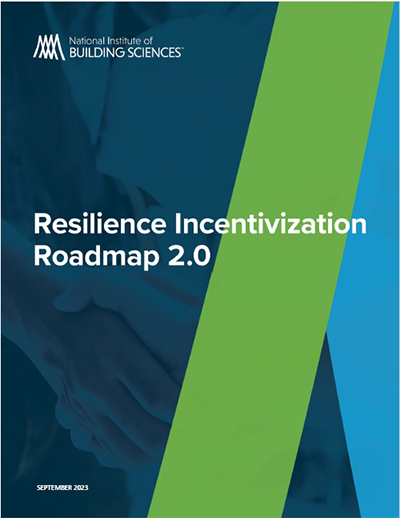Resilience Incentivization Roadmap 2.0
With the support of Fannie Mae, the National Institute of Building Sciences has developed a roadmap on mitigation investment to help Americans and the nation’s built environment prepare for and respond to the devastating effects of extreme weather.
In 2020, the NIBS Committee on Finance, Insurance, and Real Estate (CFIRE) published A Roadmap to Resilience Incentivization, which calls for public and private incentives that allow owners of buildings and other infrastructure to facilitate the upgrade of existing infrastructure and better design of new infrastructure.
The Resilience Incentivization Roadmap 2.0 is a continuation of the 2020 white paper, where the project team worked with experts from building science, lending, insurance, developer, owner, real estate, appraiser, and public assistance to understand (1) the actors, who can promote, participate in, or resist incentivization, and what drives their decisions, and (2) how to carve the economy at the joints (i.e. how to group stakeholders so each incentive template best serves a large class). The study mainly focuses on residential buildings subject to flood, and also leaves language and procedures flexible to deal with other perils, occupancies, and locales.
Roadmap 2.0 Key Findings
Based on extensive research and input from organizations representing a cross-section of stakeholder groups, the report presents several key findings:
- Mitigation saves, but it doesn’t do so in proportion to individual stakeholder investments.
- Co-beneficiaries can share the cost of such investments – but they face similar challenges to those of the property owner.
- Public-private coordination is essential.
Based on these conclusions, the project team has formulated a roadmap aimed at establishing and executing initiatives to bolster disaster resilience. This comprehensive plan encompasses the conceptualization of a certification program tailored to enhance flood resilience, along with the contemplation of three prospective pilot studies.
The primary purpose of this roadmap is to offer a structured framework that fosters alignment of the motivations and interests of various stakeholders involved. While it serves as an illustrative model for enhancing pluvial urban flood resilience, it is noteworthy that numerous principles outlined in the report can be adapted to address challenges related to riverine and coastal flooding, as well as other non-flood-related perils.
Taken together, the report recommendations form the basis for a pilot program (or series of pilot projects) to create value for all stakeholders while generating useful learnings toward future resilience incentive efforts.
Details
Pages: 150
File Size: 4.4 MB
Links





